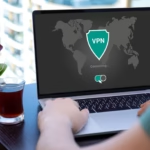Recent Blog
Check on Our Social Media
All Our Blogs

What goes on in a Security Operations Center?
A Security Operations Center (SOC) functions as the central hub for an organization’s cybersecurity efforts. It is a specialized unit staffed by cybersecurity experts who operate around the clock to defend the organization’s digital environment against potential threats.

Imagine the SOC as a digital watchtower, continuously scanning and evaluating activity across the organization’s IT landscape. Its primary role is to detect, analyze, and respond to any suspicious behavior or security incidents. The team oversees and safeguards:
- > Network and system traffic
- > Software applications and data repositories
- > Cloud-based infrastructure
- > Devices connected to the network
- > User behavior and access patterns
The primary mission of a SOC is to detect, investigate, and neutralize cyber threats before they can cause significant damage. This proactive approach has become essential in today’s rapidly evolving threat landscape, where cyber attacks are growing in:
- > Frequency: Organizations face countless attempted breaches daily
- > Sophistication: Attackers use advanced techniques to evade detection
- > Impact: Data breaches can result in massive financial and reputational damage
Modern SOCs blend human expertise with cutting-edge tools to deliver end-to-end security coverage. The team uses security information and event management (SIEM) systems, intrusion detection tools, and threat intelligence feeds to maintain constant vigilance over your digital environment.

Responsibilities of SOCs:-
Security Operations Centers SOCs are designed to coordinate cybersecurity teams by centrally monitoring threats and generating timely alerts. They gather and analyze data to detect unusual or potentially harmful activity, thereby strengthening an organization’s overall security.
A SOC plays a key role in streamlining how security incidents are managed. It assists analysts in efficiently prioritizing and addressing threats, improving both the speed and accuracy of responses. In today’s tech-driven environment. SOCs offer around-the-clock protection by maintaining ongoing surveillance and insight into the organization’s vital digital assets. Their ability to detect and respond to threats rapidly reduces the gap between the initial breach and when it is identified, helping to limit potential damage.
Key SOC Functions :-
A Security Operations Center (SOC) serves as the nerve center for managing cybersecurity within an organization. It carries out essential tasks aimed at identifying, addressing, and solving cyber risks. By using advanced technologies, methodologies, and specialized tools, the SOC enhances the organization’s ability to stay protected against a constantly changing threat landscape. Below are the primary functions of a SOC and the tools commonly used to support each:
- > 24/7 Monitoring:- Security Operations Centers (SOCs) operate around the clock to oversee an organization’s networks and systems for any signs of suspicious behavior or potential threats. Their primary objective is to identify security incidents as early as possible and respond swiftly to minimize impact.
- > Incident Detection and Response:- Once a potential security threat is identified, the Security Operations Center (SOC) promptly evaluates its severity, determines the source, and initiates actions to minimize its impact.
- > Threat Intelligence:- Threat intelligence involves gathering and analyzing data related to potential cybersecurity threats to strengthen an organization’s defenses. SOCs obtain threat intelligence from multiple channels, including open-source data, commercial threat feeds, and industry partnerships.
- > Vulnerability Management:- Vulnerability management focuses on detecting, categorizing, and addressing security flaws in an organization’s software, hardware, and systems. This process involves routinely scanning for vulnerabilities, evaluating the effectiveness of patching procedures, and resolving identified issues before they can be used in an attack.
A Security Operations Center relies on specialized professionals working in harmony to protect organizations from cyber threats. Each team member brings unique skills and responsibilities to create a robust security framework.

Example on how SOC handles real-time incidents across Tier 1, Tier 2 and Tier 3 :-
Scenario: Unusual Login Alert
Tier 1 – Triage
A Tier 1 analyst sees an alert: a user has logged in from Russia, but they’re based in the U.S.
- Checks if the user is traveling – they’re not.
- Flags the alert as suspicious and escalates to Tier 2.
Tier 2 – Investigation
The Tier 2 analyst:
- Reviews logs and sees the user also downloaded large files right after logging in.
- Isolates the user’s device from the network.
- Resets the user’s password.
- Escalates to Tier 3 for further analysis
Tier 3 – Deep Analysis
The Tier 3 analyst:
- Finds malware on the user’s laptop linked to a known hacker group.
- Blocks related IPs and domains across the network.
- Updates detection rules and prepares a security report.
Result:
The threat was neutralized quickly. Playbooks updated. Users were reminded about phishing awareness.
Benefits Delivered by an Effective SOC
An effective Security Operations Center (SOC) provides significant benefits to organizations by strengthening cybersecurity measures and improving overall risk management. The key advantages include:
- > Continuous Threat Monitoring
A well-equipped SOC offers round the clock surveillance to ensure early detection and easy handling of threats. This includes:
- — Real-time tracking and analysis of security incidents.
- — Immediate action to contain and mitigate threats.
- — Ongoing evaluation of vulnerabilities to reduce risk exposure.
- > Improved Operational Resilience
By securing critical systems and data, a SOC helps maintain smooth business operations. Key contributions include:
- — Minimizing unplanned outages and service interruptions.
- — Securing sensitive assets such as intellectual property.
- — Protecting customer information from breaches.
- — Preserving the organization’s credibility and brand image.
- > Competitive and Strategic Benefits
An effective SOC enables smarter security management and long-term strategic gains, such as:
- — Making informed decisions based on security data and trends.
- — Identifying and neutralizing threats before they cause harm.
- — Enhancing coordination and efficiency during incident response.
- — Building trust among clients, partners, and stakeholders.
- > Compliance and Governance Support
A robust SOC supports organizations in meeting regulatory and industry standards by:
- — Automating the generation of compliance-related reports.
- — Ensuring all security measures are properly documented.
- — Implementing uniform security procedures across the organization.
- — Maintaining a security posture that is ready for audits at any time.
Together, these capabilities make a SOC a vital component of an organization’s cybersecurity strategy.
In a world where cyber threats are constant and ever-evolving, the Security Operations Center stands as the frontline of digital defense. More than just a room full of screens and alerts, the SOC is where strategy, technology, and human expertise converge to protect what matters most: data, systems, and trust. As cyber risks grow more complex, investing in a strong, proactive SOC isn’t just a security measure, it’s a business imperative.
Conclusion:-
In conclusion, a Security Operations Center plays a vital role in safeguarding an organization’s digital infrastructure. It functions as the nerve center for monitoring, detecting, analyzing, and responding to cybersecurity threats in real-time. Through the coordinated efforts of skilled analysts, advanced tools, and well-defined procedures, a SOC helps ensure that potential threats are identified early and mitigated effectively. As cyber threats continue to evolve, the importance of a proactive and well-equipped SOC becomes increasingly crucial for maintaining security and business continuity.
As cyber threats become more AI-driven and targeted, SOCs must adapt through intelligent automation and interdepartmental collaboration.
References:
https://www.paloaltonetworks.com/cyberpedia/what-is-a-soc
https://www.splunk.com/en_us/search.html?q=what%20is%20SOC&size=n_10_n
https://www.ibm.com/search?lang=en&cc=us&q=what%20is%20SOC%20
Need help developing cybersecurity policies for your organization? Contact us, we can guide you through the assessment, development, and implementation process tailored to your specific needs and industry requirements.
Location
Nashik | Mumbai | Bengaluru | Dallas
contactus@quasarcybertech.com
Call Now
+91 97306 91190
Quick Links
Our Offerings
Copyright 2025 © All Right Reserved | QLeap Education & Trainings



